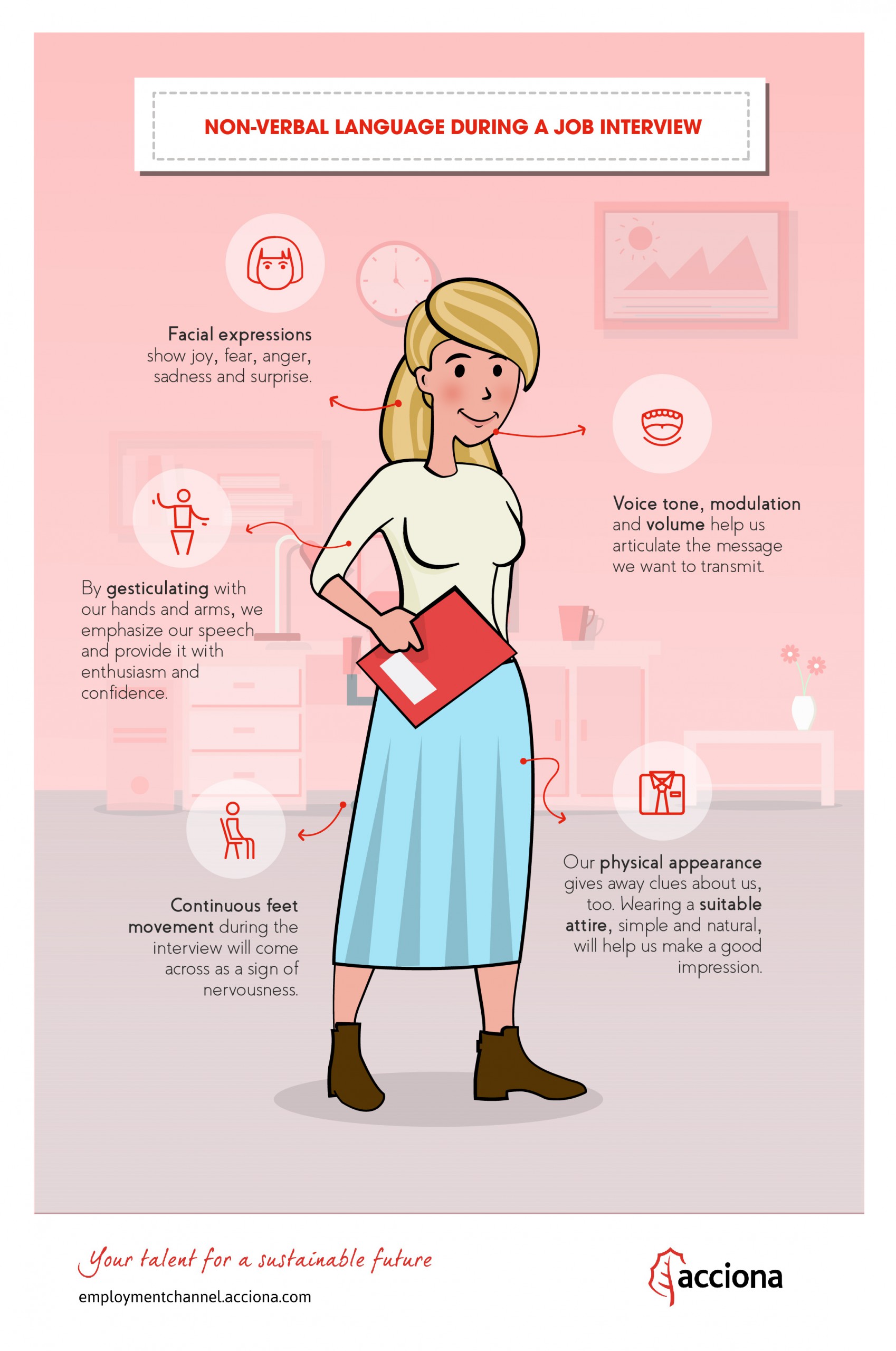In a communicative process, just a little percentage of the information is conveyed through verbal language. In particular, according to experts, up to 80 % of what we transmit is done non-verbally, while the other 20% is directly related to our words. Anthropologist Albert Mehrabain goes beyond this classification claiming that only 7% of the communication process between two people is done through words, 38% through voice, and the remaining 55% represents body language and gestures.
Without even noticing, and almost unconsciously, our body is constantly transmitting information about our intentions, emotions and personality. Gestures, facial expressions, body posture, tone of voice and speech fluency, as well as our personal appearance, speak for ourselves and provide numerous tell-tale signs to the person in front of us.
Understanding the meaning of the messages we convey through our non-verbal behaviour is key to communicate ourselves successfully, not only in our everyday conversations, but also when carrying out presentations or expositions in public, or during the usually dreaded job interviews.
Knowing these non-verbal elements better, and following some simple steps, we’ll walk out of any job interview more than satisfied.
Of course, trying to keep our body language under control would be like trying to tame our own nature: an extremely complex task to achieve. However, we must be careful about our body language, since it can accentuate, substitute or contradict what we say through our words, which are the essence of what we want to convey. In fact, we wouldn’t be able to understand their true meaning if words didn’t go together with body language and the tone of voice used.
 The face is the window to the soul, indeed
The face is the window to the soul, indeed
To begin with, we should know that our facial expressions are the most revealing emotional indicator humans have. With them we can express basic emotions such as joy, fear, sadness, disgust and surprise. And, even if it’s true that we can disguise them sometimes, it’s almost impossible to control all face muscles consciously. That’s why it’s inevitable to think that our face is indeed the most accurate window to our thoughts. Our smile will be our best cover letter. It makes us come across as amiable, congenial and self-assured. In fact, a sincere smile could be the key to the job opportunity we aspire to.
As for our limbs, many researches endorse that, the farther a body part is located from the nervous system, the less conscious control we have over it. Making gestures with the arms, hands and torso helps to emphasize, accompany or complement our speech in order to convey enthusiasm, vitality and confidence, but if we overdo it, or we keep our hands in our pockets, clench our fists, cross the arms in a defensive posture, that could lead our interlocutor to think that we don’t know where we’re going and that we are nervous. It would be advisable not to put our hands over the mouth repeatedly and keep them always below the chin.
In the case of legs and feet, which curiously enough point usually towards what we’re interested in, it would be best to avoid changing their position repeatedly, or systematically moving or dragging our feet, since that indicates anxiety, worry or lack of interest.
Making eye contact with the interviewer, although never above eye level, is a symptom of transparency and respect. Not looking right in somebody’s eye could be a sign of excessive shyness or lack of self-confidence.
When shaking the hand of the interviewer you need to show conviction, strength and self-confidence, gripping it firmly and avoiding doing it loosely or too tightly.
The trinity: posture, voice and appearance
Our body posture must convey strength and enthusiasm. We must keep a straight stance, with our shoulders in a straight line with our back, not too arched, but not too relaxed, either. When sitting down, we should arch our back slightly forward, with an active listening attitude. If the interview is conducted while standing up, we must move naturally and respect the space of our interlocutor so that we don’t come across as invasive. Also, we must avoid any unnecessary touching and never turn our back.
As for our voice, it would be advisable to avoid speaking in a low tone of voice, since that could imply lack of confidence and shyness. Do not overcome the voice volume of the person interviewing you, either, so that you don’t come across as intimidating, arrogant or domineering.
Other aspects that may be subjected to analysis are those gestural tics we resort to whenever we feel anxious or nervous, such as touching our eyes, ears, mouth or hair systematically, or messing about with a pen, ring or pair of glasses impatiently.
We should pay close attention to our appearance and wear adequate clothing. A nice image always makes a good impression. Use a simple range of light and neutral colours, natural make-up and hairstyle, and closed, clean shoes. Hygiene is essential, and perfume use should be subtle.
Certainly, what is apparent is that no conclusion can be drawn from a simple gesture on its own, but a sharp interlocutor will be able to interpret whether our speech is sincere or we’re trying to hide something instead. And we know that it’s extremely difficult, if not impossible, to get a second chance to make a first impression. That´s why it is crucial to portray yourself as a white canvas and, above all, calm and natural expressiveness should prevail at all times.
Sources: Forbes, Hays, Albert Mehrabian